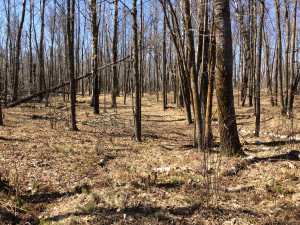The Best Turkey Hunting Calls and Tips Throughout the Season
Powered by Stone Road Media
Whether you primarily hunt heavily pressured public lands or you’re doing some late season turkey hunting, you’ve no doubt encountered a few call-shy gobblers at some point. Sometimes they don’t respond to calling at all, and sometimes they just hang up outside of gun or bow range. It’s unbelievably frustrating to see them strutting in circles and not be able to take a shot at them. But you’re bound to run into the situation eventually. Why is hunting call-shy turkeys so difficult?
Lone Star Thunder Chickens | Bone Collector Season 4, Episode 18
(Video) – Michael is invited to hunt both Texas and Louisiana for springtime turkey hunting. Michael and Mason Waddell are hunting some hard headed, stubborn birds, it takes a lot to be successful in these situations.
As we mentioned, wild turkeys get pretty wary towards the end of the season. After they’ve been called to and shot at by hunters in every field opening, woodlot, and food plot, it shouldn’t come as a surprise that they would get a little tight-beaked and distrustful. But there are other natural reasons why gobblers get call-shy throughout the spring months. It could be that a subordinate bird had his feathery butt handed to him by a mature tom a couple times, and he’s nervous for another confrontation. Or perhaps the peak breeding period is over, which means there’s no urgent reason to respond to calls. Maybe the bird you’re trying to hunt just has a weird personality and is naturally a very quiet and solitary creature. Who knows? Luckily, there are several techniques you can use to hunt call-shy turkeys more effectively this spring.
Strategies for Hunting Call-Shy Turkeys
One of the best ways to get after a quiet and nervous gobbler is to use a deer hunting tactic. Simply sit still and wait for the bird to come to you. That’s obviously much easier said than done, but it’s not hard in theory. Spend some time getting to know your hunting property and the birds that live on it by doing some pre-season turkey scouting. Use trail cameras to gather critical details while you can’t physically be out in the woods watching and observing in-person. Learn where the birds primarily roost and where they feed, and set up in between those two areas. Try to find a place that’s closer to the feeding area than to the roosting trees, so that you can sneak in and get set up without a reasonable fear of spooking the turkeys. Driving your Bad Boy Ambush iS side-by-side to your hunting location, and switching to the electric drivetrain to sneak even closer is a proven tactic time and time again. Also, if there is a natural bottleneck or funnel location between these two areas, that is exactly where you need to be. Use vegetation and topography to your advantage by sneaking behind such structure to within striking distance.
